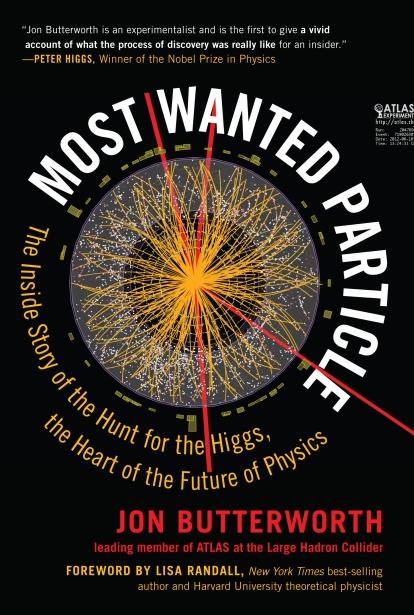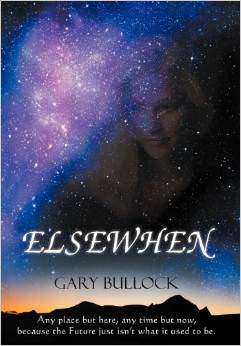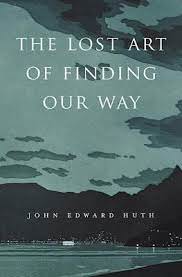Have you ever wished that there was an instruction manual for life? A second edition of “Success Strategies from Women in STEM” aims to be that book for women in research – a ‘portable mentor’ to help individual researchers find their way. It’s part of a much larger attempt to tackle the huge problem of gender equity in the STEM fields – science, technology, engineering and mathematics.
Continue reading “Book review: Success Strategies from Women in STEM”
Book Review and Giveaway: “Most Wanted Particle” by Jon Butterworth
Most Wanted Particle is an insider’s tale of the hunt for the Higgs boson, the field which imparts mass to, well, nearly everything. Written by Jon Butterworth —- a physicist working with the ATLAS team at the Large Hadron Collider —- the book documents the construction of the Large Hadron Collider, the catastrophe after it was first turned on, and the global excitement as evidence for the Higgs boson grew incontrovertible.
Most Wanted Particle has already received glowing praise from the likes of Brian Cox and even Peter Higgs —- for whom the boson is named -— and I’m sure that several physicists reading this site already have the book on their ‘to read’ list. But what about the rest of us? As a biology PhD whose last physics class was about 15 years ago, I decided to see if the book was accessible enough for your average science geek.
Find out how you can win a copy of this book, below.
First and only warning: the book discusses some very fundamental physics, and if you’re afraid to learn about topics like quarks, gluons, and hadronic jets, then this book will be tough going for you (all three of these are introduced on page 22, for instance). This complexity should be largely expected given the subject matter of the book; the alternative would be like a WW2 book that didn’t mention Normandy. So if learning some jargon scares you, you’d best stick to reading the news headlines from CERN.
With that caveat out of the way, Butterworth is a stellar writer and teacher, and he employs a number of tricks to make Most Wanted Particle extremely readable. First of all, equations are largely absent—they are described rather than displayed. (More kudos are due for making it over halfway through the book before the first Feynman diagram appears). Second is Butterworth’s impressive facility with analogy: often, even if you are struggling with the specifics of a concept, you will be able to grasp the broad brush strokes, and that’s enough to follow along with the tale.
Finally, there is the journalistic style. The book is written as a passionate first-person account, and the main narrative is pleasingly interrupted by diversions. It’s not uncommon to have a dense description of, say, super symmetry, broken up by a blog-like chapter discussing an international trip to a conference. (Other topics include meeting etiquette and ‘taking things offline’; what makes a good acronym; and a particularly memorable drunken night for the author and friends in Hamburg.)
Do you have friends who are scientists? If so, you will feel at home reading this book, and it took me a while to understand why. It’s because the general impression that I get from this book is very similar to taking a scientist friend to the pub, and having them describe their work to you over a beer. Sometimes you’ll get a little lost in the more thorny parts of the science; often you’ll get carried off by a tangent; but overall you’ll just enjoy a rollicking good tale, told by an intelligent storyteller.
This book comes highly recommended!
Most Wanted Particle is published by The Experiment Publishing. Find out more about the book here.
Thanks to The Experiment, Universe Today has one copy of this book to give away to our readers. The publisher has specified that for this contest, winners need to be from the US or Canada.
In order to be entered into the giveaway drawing, just put your email address into the box at the bottom of this post (where it says “Enter the Giveaway”) before Monday, April 13, 2015. We’ll send you a confirmation email, so you’ll need to click that to be entered into the drawing. If you’ve entered our giveaways before you should also receive an email with a link on how to enter.
Sci-Fi Book Review: “Elsewhen”
Elsewhen is a story about star-crossed young lovers, a love story for science fiction fans. Conceived when author/actor Gary Bullock was working at a radio astronomy site, Elsewhen follows the path of Elijah (‘Lije’) and Laura Bess, two child prodigies who fall head-over-heels in love before tragedy strikes and tears them apart. But for Lije and Laura, it seems that True Love might be able to thwart even fate…
Concepts from the more poetic end of theoretical physics are liberally peppered among the pages—musings on the directionality of time, for example—but this is by no means ‘hard’ science fiction. Scientific complexity level is about equivalent to the first Thor movie, so if you don’t know your bosons from your fermions, don’t despair.
Blending physics with a love story might seem like a difficult line to walk, but Bullock does a respectable job with his 118-page novella. Bullock’s career appears to have wended from screen writing to writing novels, and indeed, Elsewhen reads kind of like a screenplay—which I mean as both praise and as a critique.
On the side of praise, there is a good kind of inertia to the book. The plotline barrels along at a cracking pace, and given the length of the novella, it’s quite possible that you might read this cover to cover in a single night. But on the flip side, I wanted this novel to be longer. Several concepts and (particularly) characters were only loosely sketched out before the plotline whisked away to the next development.
The brevity led to my two main problems with the book. First of all, some key characters are bald rehashes of literary tropes. Some character development earlier in the novel could have, for example, fleshed out the villains in the story to make them more human and relatable.
Second, I craved more depth from the story. The many fantastical elements of the storyline open up the main characters in discussion of various concepts of philosophy and metaphysics, and I felt that more exposition here would have led to a more interesting read (and probably would have also helped with the character development problem). However, this may be less a critique of Elsewhen, and more a problem of my expectations going into this novel.
These issues aside, Elsewhen is a fun book with a clever premise. For the price of a cup of coffee, it’s easy enough to recommend for a light read.
Elsewhen is available on Amazon, Itunes and Audible.
Here’s a “trailer” for the book:
Book Review – ‘The Lost Art of Finding Our Way’ by John Edward Huth
It’s a moment that you’ve always dreaded – you stepped away from your hiking buddies to take a photo, but on the way back you slipped down an embankment. Now you’re isolated, you can’t find the trail or your friends, and you’re in unfamiliar woods. You try your phone – no signal. How did people navigate before GPS, anyway? In The Lost Art of Finding Our Way, author John Edward Huth aims to show us just that. In a richly-illustrated 544 pages, Huth tries to illuminate the techniques that let man circumnavigate the globe, long before the first GPS satellite was launched.
The book is divided into roughly two halves, with the first being historical tales and discussions of techniques used by ancient navigators to find their way. The Norse are here, as are Pacific Islanders and European sailors: all have lessons to teach us about our environment, from the way that waves form around a cluster of islands, to how to use a cross-staff to estimate the position of a star on a heaving ship deck. Following this, the second half of the book is more abstract, dealing with factors useful to navigators: like weather prediction, or the factors that create the swell and tides in the ocean.
I found the first half of the book to be the most interesting, as the practical techniques for, say, triangulating your position with only a map and a compass are very interesting to a city-bound boy. The second half was much tougher reading as it is quite dry, often reading like a physics textbook. Descriptions are clear, although I will note that if you were looking for a practical manual to teach you navigation, this book isn’t it. It will, for instance, explain how dip angle and refraction in the atmosphere complicate accurate estimates of the horizon and the elevation of stars—but stop short of pointing you a resource to help correct for these inaccuracies.
It’s perhaps ironic that The Lost Art of Finding Our Way sometimes feels a little directionless. Maybe it’s because the very scope of the book is so large: in the one book, you can find a discussion of how search parties can be most efficient; descriptions of the magnetic field variations across the Earth’s surface, and their causes; speculation as to why many cultures have ‘great flood’ myths; and an explanation of the physics of wind interacting with sails.
Overall, this book is an impressive attempt to give a broad overview of a number of navigation techniques. Unfortunately it is marred by its own ambition, and the result is a book that can at times feel random, aimless and meandering.




